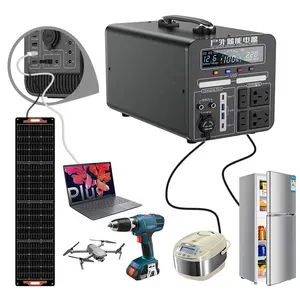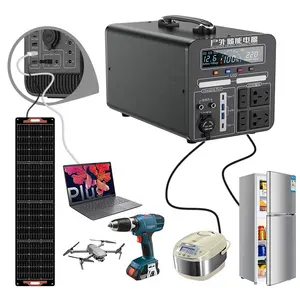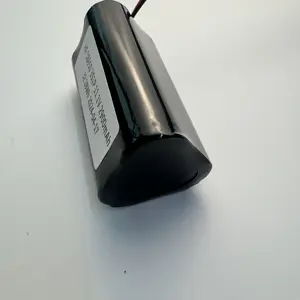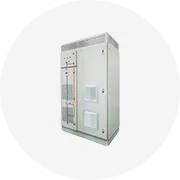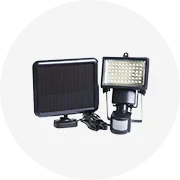आपके उद्योग में लोकप्रिय






बीपीआई निर्माता फैक्टरी एक्सबॉक्स के लिए कम सेल्फ-डिस्चार्ज उच्च गुणवत्ता वाले एनआईएमएच रिचार्जेबल बैटरी पैक को अनुकूलित करती है
₹35.63 - ₹217.12
न्यूनतम ऑर्डर: 2000 नग







बैटरी आपूर्तिकर्ता ट्रिम्बल रिकॉन बैटरी 2.4V 4000mAh TDS Ni-MH बैटरी
₹4,155.67 - ₹4,664.53
न्यूनतम ऑर्डर: 1 नग






21.9V 36000mAh 330wh/kg 36Ah6S सॉलिड स्टेट बैटरी लिथियम आयन निर्माता HD UAV पावर ड्रोन UAV फिक्स्ड-विंड Vtol मल्टीरोटर
₹24,849.21 - ₹38,418.74
न्यूनतम ऑर्डर: 3 नग







फैक्टरी अनुकूलित एनआईएमएच रिचार्जेबल बैटरी एससी नी-एमएच एच-2/3एए 400/600/650/700/750 एनआईएमएच रिचार्जेबल बैटरी
₹15.27 - ₹21.21
न्यूनतम ऑर्डर: 100 नग







उच्च गुणवत्ता कस्टम लंबी चक्र जीवन 701850 550mAh 3.7v बहुलक लिथियम बैटरी
₹81.42 - ₹94.99
न्यूनतम ऑर्डर: 10 नग




NiMH बैटरी 60D8000mAh 1.2V ऊर्जा भंडारण पावर बैटरी पैक, लंबे जीवन चक्र और कम आंतरिक प्रतिरोध
शिप करने के लिए तैयार
₹322.28 - ₹379.95
न्यूनतम ऑर्डर: 1000 नग
शिपिंग प्रति टुकड़ा: ₹13,565.30






ए. ए. 14500 सूखी लिथियम बैटरी ER14505H 3.6V 2700mAh एर 14505 Lisocl2 प्राथमिक सेल ER14505M 3.65V 2200mAh ली आयन धातु बैटरी
₹84.81 - ₹169.62
न्यूनतम ऑर्डर: 10 नग






कस्टम 3.7v 7.4v 12v 14.8v 6AH 8AH 8AH 10Ah 21Ah lifepo4 लिथियम 18650 रिचार्जेबल बैटरी पैक
₹839.62 - ₹3,383.91
न्यूनतम ऑर्डर: 2 नग






30000 बार जीवन चक्र लिथियम Titanate बैटरी 2.4V 30AH Prismastic LTO बैटरी,
₹1,658.88 - ₹1,927.73
न्यूनतम ऑर्डर: 100 नग






अनुकूलित Ni-mh बैटरी 5s 6s 7s 6V 7.2v 8.4v 11.1v 2000mah 4000mah 6000mah Nh बैटरी पैक
₹670.00 - ₹1,187.34
न्यूनतम ऑर्डर: 2 नग












घरेलू उपकरणों के लिए टिकाऊ 2500mWh 1.6v Zn-Ni डबल रिचार्जेबल बैटरी 1.2v nimh चार्जेबल बैटरी
₹72.09 - ₹93.30
न्यूनतम ऑर्डर: 100 नग






शेन्ज़ेन थोक व्यापारी फैक्टरी मूल्य 3.7v नी, महाराष्ट्र ए. ए. 2900mAh रिचार्जेबल बैटरी/3.7v nimh बैटरी 18650
₹186.59 - ₹207.79
न्यूनतम ऑर्डर: 100 नग






मिनी सीबी अनुमोदित 504045 1000mAh 3.7V के लिए पार्कसाइड बैटरी Nimh बैटरी पैक 60280 Lifepo4 बैटरी वायरलेस
₹97.54 - ₹122.98
न्यूनतम ऑर्डर: 10 नग






पावर टूल बैटरी पैक 44.4 v पोर्टेबल 44.4 वोल्ट v कार कस्टम नीह पैक 21700 12s3 ली आयन लिपो
₹23,746.69 - ₹26,206.17
न्यूनतम ऑर्डर: 2 नग




रिचार्जेबल बैटरी 1.2v 1200mah nimh बैटरी पैक के लिए इलेक्ट्रिक डिवाइस
शिप करने के लिए तैयार
₹169.62
न्यूनतम ऑर्डर: 2 नग
शिपिंग प्रति टुकड़ा: ₹7,590.46


मोटोरोला के लिए प्रतिस्थापन बैटरी PMNN4066/PMNN4066AC/PMNN4066A, 7.4v, ली-आयन, 2400mAh
₹1,102.53 - ₹1,356.96
न्यूनतम ऑर्डर: 2 नग






अनुकूलित NIMH राष्ट्रीय संचारी रोग संस्थान 2.4v 3.6v 4.8v 6v 7.2v 9.6v 12v 14.4v 24v आकार सी डी ए. ए. एएए NIMH रिचार्जेबल बैटरी पैक
₹161.14 - ₹839.62
न्यूनतम ऑर्डर: 50 नग






इलेक्ट्रिक शेवर के लिए कस्टम एनएमसी सेल 3.7v 11.1wh UL KC ROHS ली-आयन बैटरी 3000mah
₹207.79 - ₹262.91
न्यूनतम ऑर्डर: 1 नग





PMNN4477A नी, महाराष्ट्र 1500mAh बैटरी के लिए संगत रेडियो: T200, T200TP, T260, T260TP, T400, t460, T461, T465, T489, T600, T605
₹381.65 - ₹508.86
न्यूनतम ऑर्डर: 50 नग






कस्टम निकल धातु हाइड्राइड बैटरी (n-mh) एक aaaaa nimh बैटरी पैक 2.4v 3.6v 4.8v 6v 8.4v 9v 9.6v 12v 24v 24v
₹296.84 - ₹517.34
न्यूनतम ऑर्डर: 5 नग






Highdrive नी-Mh बैटरी पैक अनुसूचित जाति 3000mAh 7.2V NIMH रिचार्जेबल बैटरी पैक के लिए आर सी खिलौना
₹252.74 - ₹499.53
न्यूनतम ऑर्डर: 50 नग






लंबे जीवन चक्र रिचार्जेबल बैटरी अनुसूचित जाति 7.2V 4000 mAh nimh बैटरी पैक के लिए आर सी कार/ट्रक/नाव/हवाई जहाज
₹736.15 - ₹858.28
न्यूनतम ऑर्डर: 30 नग






डेवाल्ट पावर टूल्स ड्रिल के लिए 3700 एमएएच 14.4 वोल्ट डीसी9001 रिचार्जेबल निम पावर टूल बैटरी पैक रिप्लेसमेंट
₹1,454.49 - ₹1,716.55
न्यूनतम ऑर्डर: 2 नग





मोटोरोला टू वे रेडियो HNN9628 GP300, GTX800/900 2000mAh 7.5V ताइवान पेशेवर निर्माता के लिए रिप्लेसमेंट बैटरी NIMH
₹424.05 - ₹3,816.44
न्यूनतम ऑर्डर: 50 नग






NiMH बैटरी पैक 100-13000mah 2.4V 3.6V 4.8V 6V 7.2V 8.4V 9.6V 10.8V 12V 13.2V 14.4V 18V 24V ए. ए. एएए सी डी अनुसूचित जाति एफ बैटरी
₹12,823.21 - ₹14,197.13
न्यूनतम ऑर्डर: 2 नग






Vapcell V28 2800mAh 1.2V 14500 रिचार्जेबल नी-MH बैटरी सेल ए. ए. आकार बटन शीर्ष बैटरी काले के लिए खिलौने कैमरा माउस आदि
₹101.78 - ₹122.98
न्यूनतम ऑर्डर: 10 नग






INR18650 3000mAh सेल द्वारा 7.2v 6000mAh रिचार्जेबल बैटरी पैक 2S2P लिथियम आयन बैटरी
₹678.48 - ₹763.29
न्यूनतम ऑर्डर: 10 नग






Ebl 1.5V रिचार्जेबल AA लिथियम आयन बैटरी सेल Ebl AA बैटरी चार्जर के साथ सेट
₹1,541.00 - ₹1,861.58
न्यूनतम ऑर्डर: 2 नग






2024 XINRICH सबसे अधिक बिकने वाली लिथियम बैटरी 3.7v फेलिसिटी बैटरी लिथियम 3.7v 72ah लाइफपो4 बैटरी
₹2,205.05 - ₹2,374.67
न्यूनतम ऑर्डर: 50 नग






नया isdt K4 1 ~ 8s लिथियम बैटरी स्मार्ट चार्जर 20a 600w एसी/डीसी स्वतंत्र रूप से लिपो बैटरी चार्ज rc टॉय
शिप करने के लिए तैयार
₹13,315.11 - ₹15,011.30
न्यूनतम ऑर्डर: 2 नग
शिपिंग प्रति टुकड़ा: ₹2,014.23






ओएम लोगो कस्टम 1.6v nzn aaaaa रिचार्जेबल बैटरी 1.2v nimh प्रभार्य बैटरी
₹80.57 - ₹106.02
न्यूनतम ऑर्डर: 100 नग





रिचार्जेबल राष्ट्रीय संचारी रोग संस्थान नी, महाराष्ट्र लिथियम आयन वॉकी टॉकी बैटरी मोटोरोला केनवुड दो तरह रेडियो के लिए
₹576.71 - ₹1,355.26
न्यूनतम ऑर्डर: 1 नग






7.2v नी mh उप सी 3000mah/ 3200mah अनुसूचित जाति Akku पैक Batterie 7.2V 3500mAh नी, महाराष्ट्र niMh ट्यूनिंग आर सी कार ऑटो ट्रक बूट Tamiya
₹245.10 - ₹498.69
न्यूनतम ऑर्डर: 50 नग





मोटोरोला टू-वे रेडियो NNTN4496 NNTN4497AR 7.2V 2000mAh ताइवान पेशेवर निर्माता के लिए रिप्लेसमेंट बैटरी Ni-MH
₹424.05 - ₹3,816.44
न्यूनतम ऑर्डर: 50 नग






ईपी EnrichPower Airsoft बैटरी 8.4V 1600mAh NiMH 7H फ्लैट बैटरी पैक के साथ मिनी Airsoft के लिए Tamiya कनेक्टर
₹636.08 - ₹695.44
न्यूनतम ऑर्डर: 20 नग






पोर्टर केबल टूल के लिए चार्जर सेट के साथ 3700mAh NI-MH 18Volt रिप्लेसमेंट रिचार्जेबल पावर टूल्स बैटरी
₹1,786.09 - ₹2,110.92
न्यूनतम ऑर्डर: 2 नग
शीर्ष श्रेणियां
nimh बैटरी लाइफ के बारे में
Alibaba.com 1672 nimh बैटरी लाइफ उत्पादों की पेशकश करता है. nimh बैटरी लाइफ विकल्पों की व्यापक विविधता आपके लिए उपलब्ध है, जैसे बिजली उपकरण, ऊर्जा भंडारण, और घर उपकरण. आप lco nimh बैटरी लाइफ से भी चुन सकते हैं.
